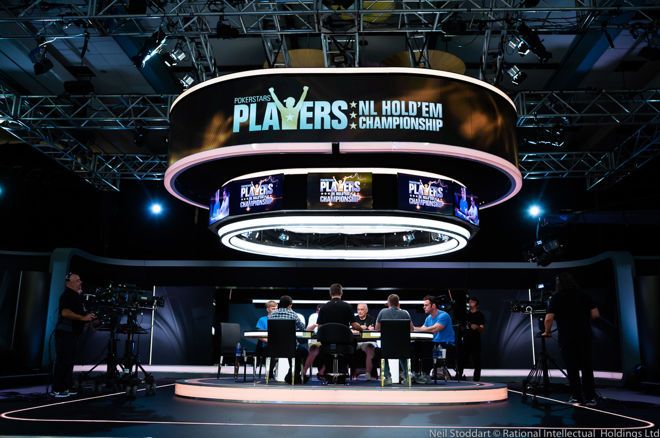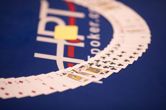Hand Review: When ICM Looms Largest

Table Of Contents
Covering live poker tournaments for a living affords me the opportunity to see countless thousands of hands played out, many of which offer interesting and potentially valuable insights into how players — both amateurs and professionals — play the game. In this ongoing series, I'll highlight hands I've seen at the tournaments I've covered and see if we can glean anything useful from them.
The Scene
Last week, we looked at my favorite hand from the final table of the PokerStars Players No-Limit Hold'em Championship that took place earlier this year at the PokerStars Caribbean Adventure in the Bahamas. That discussion reminded me that there was one more hand that caught my eye which I'd like to examine this week.
The situation was much the same as last week's, as this hand took place a couple of hands prior to Julien Martini's big bluff. Seven players were left at the final table with Martini way in front with more than double the next stack. Meanwhile Marc Perrault was on the opposite end with just under three big blinds to his name at 150,000/300,000/300,000.
The Action
Martini was in the hijack and raised to 600,000 with A♥K♣. Farid Jattin was dealt A♠J♠ in the cutoff, and he shoved all in for 6,200,000. Everyone else folded back to Martini and he quickly called.
The 6♠5♠2♦ flop gave Jattin a fighting chance, but his flush draw failed to materialize as the board ran out Q♦ and 10♣ and Jattin was eliminated in seventh.
Concept and Analysis
On the surface, this hand doesn't necessarily scream out "strategic deep dive."
In fact, I think it's pretty obvious what occurred here. Jattin opted to go for a shove that has a positive expected chip value (+chipEV) but a negative expected monetary value (-$EV).
Still, I think it's instructive to look at the numbers and take stock of how ICM warps the math in these spots. Certainly, I think it's an area of my own game that's lacking as I often have no regard for ICM, which has likely cost me money in a number of spots in the past.
When it comes to the value of Jattin's shove, I think it's quite clear he's printing chips here. The big stack Martini was opening any two cards, as demonstrated by last week's hand when he opened Q♦5♣ in early position.

Martini was more than justified to be doing so, because Perrault's miniscule stack had everyone else absolutely handcuffed. Nobody wants to be the next person to bust when someone is all but assured to be all in soon, particularly when the rest of the players are sitting on reasonably comfortable stacks above 20 big blinds.
Given Martini's wide opening range, and how much of that range he'd be forced to fold, shoving A♠J♠ on 20 big blinds is as obvious and straightforward as it gets... unless there's a massive ICM sword hanging over everyone's head.
To see just how sharp said sword was, we'll plug the numbers into an ICM calculator. I used the one at ICMpoker.com.
| Payouts (Place) | Stacks | Value |
|---|---|---|
| $5,100,000 (1st) | 18,400,000 | $3,043,638.03 |
| $2,974,000 (2nd) | 9,400,000 | $2,302,774.24 |
| $2,168,000 (3rd) | 9,325,000 | $2,294,959.70 |
| $1,657,000 (4th) | 9,325,000 | $2,294,959.70 |
| $1,304,000 (5th) | 7,925,000 | $2,141,669.02 |
| $1,012,000 (6th) | 6,200,000 | $1,929,876.50 |
| $746,000 (7th) | 875,000 | $953,122.81 |
Holy Toledo, Batman.
Here, we can see exactly why going bust next is such a disaster for everyone not named Marc Perrault. Even the stack of Jattin, next shortest at the table, is worth almost $2 million! The next payout of $746,000 is less than 40 percent of Jattin's stack value.

The question is, how should Jattin and the rest of the players be approaching this spot?
I'm no expert when it comes to these situations — you'd have to ask a strong sit-n-go player to really get a good handle on it — but it feels gross to shove anything but super premium holdings and go bust here. I'm not even sure I'd feel comfortable jamming with queens in this situation, although I don't have any confidence I'd actually find the fold button in real life.
I'm certainly not breaking new strategic ground when I say this, but it's incredibly important at final table spots to be cognizant of how things change when someone is crippled down to a handful of big blinds. Looking at the chart above, you can really see how amazingly powerful of a spot Martini found himself in as the rest of the players aside from Perrault were pretty much stuck folding unless they wanted to risk ICM disaster the likes of which is rarely seen.
Jattin's fearless, take-no-prisoners style is a big part of why he has four six-figure scores, and it's the way I usually approach a final table myself. But when it backfires — as it did here and has done for me plenty of times — it can cost you a whole lot of equity.









